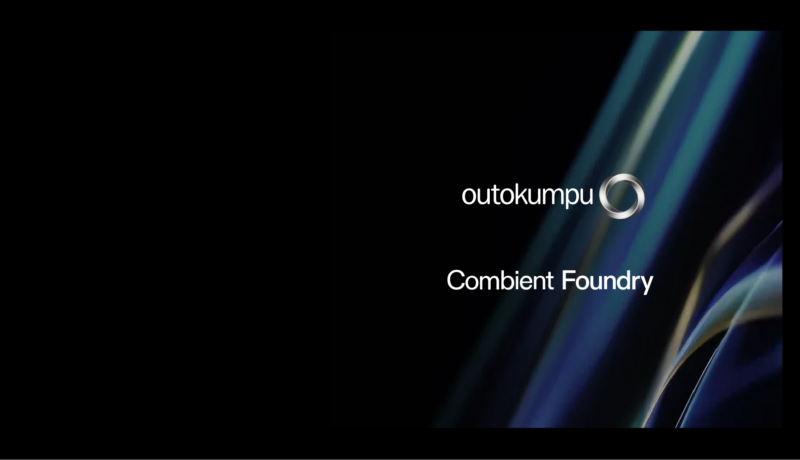Marketing is often treated as the finishing touch of a venture client operation — a slide here, a press release there. But our recent best practice session with the Combient Foundry alliance made one thing very clear: communication and marketing are not just about visibility — they’re strategic levers for driving demand, adoption, and executive engagement.
In this article we explore how structured communication along the entire venture client journey can unlock business impact faster and more reliably.
1. Generate Demand for Startup Solutions
The venture client process starts long before scouting and startup pitches — it begins with generating internal pull for venture client services. This phase focuses on raising awareness and creating desire among corporate employees for startup-driven innovation.
Goal: Shift mindsets and normalize startup collaboration — before the first project begins.
Why it matters:
Without internal demand, even the best startup won’t get a fair chance. Teams need to want startup solutions — and understand their relevance — before they’re willing to share business-critical problems.
Tactics that work:
- High-volume outreach via LinkedIn, internal newsletters, intranet, or C-level communications
- Bold, credibility-building messaging: startups = cutting-edge tech, talent, funding
- Visuals that break the “startup = 2 students in a garage” cliché
- Storytelling that shows how startups are solving real problems
2. Generate Leads Through Targeted Messaging
Once general awareness is established, the next step is targeted lead generation. This means identifying teams with startup-relevant challenges and equipping them with the tools to engage.
Goal: Move from awareness to qualified opportunities.
Why it matters:
You can’t scale startup adoption without startup-relevant problem statements. These come from within — but they need nurturing.
Tactics that work:
- Business-unit-specific workshops or keynotes
- Focused materials explaining how startup tech addresses specific domain needs
- Prioritization and qualification during early outreach: Which teams are curious and open?
- Standardized assets for consistent messaging.
3. Support Startup Adoption
Even the most relevant startup won’t scale without internal traction. Once a pilot is launched, marketing shifts into enablement mode.
Goal: Create conditions for pilot success — and future industrialization.
Why it matters:
Internal blockers like procurement, legal, and IT can stall progress. Communication can grease the wheels — and surface broader use cases.
Tactics that work:
- Map out and connect the startup with relevant internal functions
- Organize use case identification workshops to uncover scale potential
- Communicate clear business cases and ROI
- Highlight that a startup is already a trusted supplier
4. Ensure Customer Satisfaction
Success is not just about project outcomes. It’s also about perception. The way people feel about working with your team will determine if they return — and if they spread the word.
Goal: Turn your customers into advocates and build a network effect.
Why it matters:
Satisfied current and past project owners become promoters. Dissatisfied ones can quietly block your next opportunity.
Tactics that work:
- Share project success stories internally and externally (e.g. Scania)
- Host Lunch & Learn sessions to build community and inspire peers
- Showcase insights from the startup world to foster curiosity (e.g. interviews with top founders)
- Build emotional buy-in through storytelling and shared wins
5. Secure Executive Buy-In
Securing executive buy-in isn’t a one-off pitch. It’s an ongoing engagement process. Without it, scaling becomes exponentially harder.
Goal: Build lasting top-down support and momentum for venture client operations.
Why it matters:
Executives are not only gatekeepers of budget and visibility — they’re amplifiers. One sponsor can unlock dozens of new conversations.
Tactics that work:
- Stakeholder mapping and tailored engagement strategies
- Peer-to-peer formats: executive to executive > slides and decks
- Executive-to-founder conversations to unlock emotional commitment
- Platform events like the Industrial Future Summit for visibility and alignment
- Create company wide success stories recapping all past projects (e.g. Scania Playbook)
The Full Funnel: Marketing Across the Venture Client Lifecycle
As the diagram from our session shows, communication is not a side effort — it’s important across every phase of the venture client process. From generating demand to driving adoption and repeat engagement, marketing helps shape every interaction into an opportunity for traction.
Final Thought
Too often, marketing is treated as a nice to have — something to do when the pilot is done. But the companies that scale venture client success know it is a must-have. Marketing is the engine behind growing your venture client impact.
If you want to accelerate startup adoption, build internal momentum, and make venture clienting a strategic advantage, start where it matters: with the message.
📅 Save the Date: [Industrial Future Summit — September 25, 2025 | Stockholm, Sweden]
Meet the people shaping the future of corporate-startup collaboration.
www.industrialfuture.co
Writers: Ana Carolina Alex, Sylvia Paersch & Felix Gugler
Will, Helm & Tell is a strategic marketing agency focused on the venture client space. Based in Munich, it helps venture clients and ecosystem players globally turn complex topics into clear, targeted messaging—across content, events, and every stage of the venture client process.






